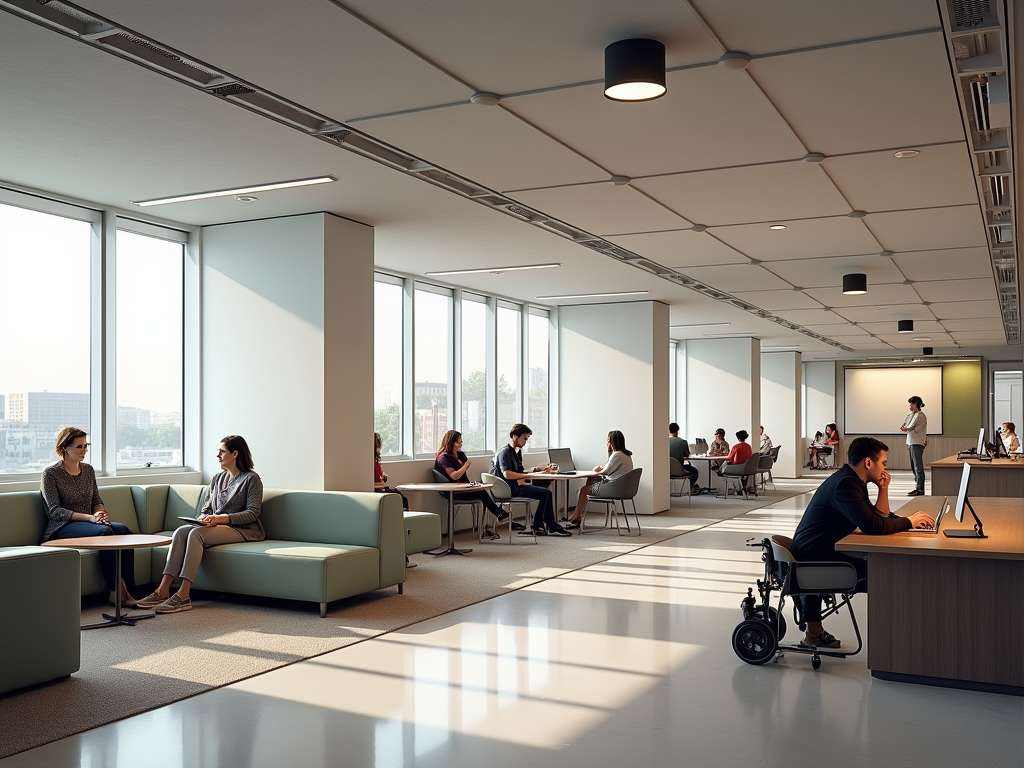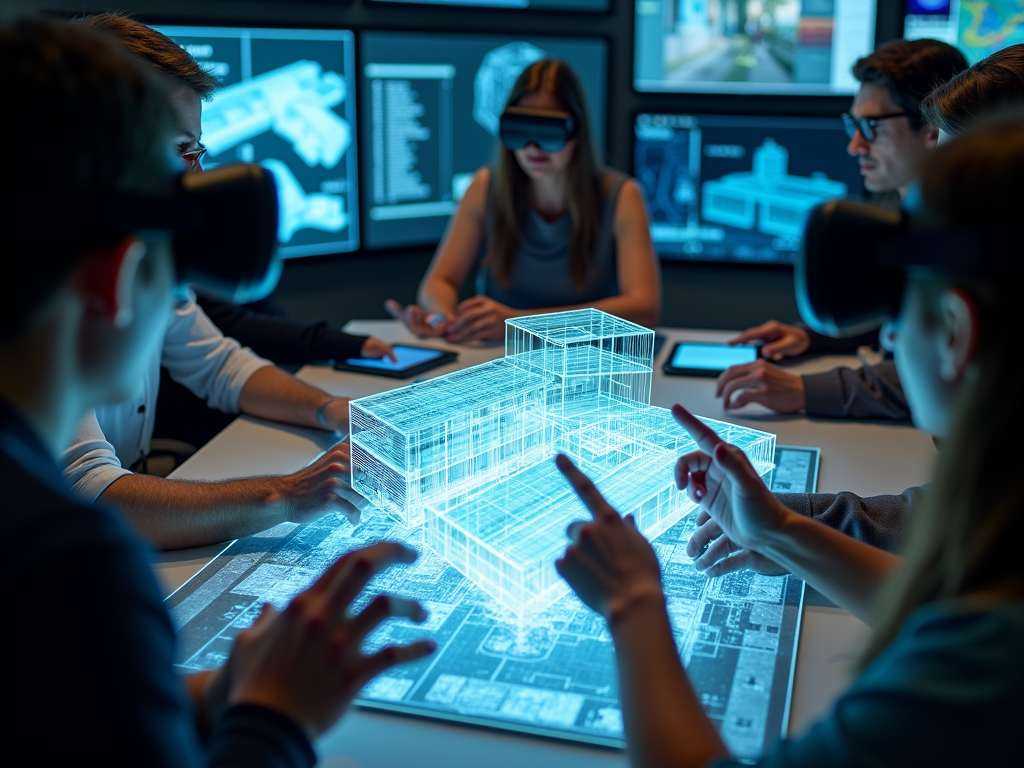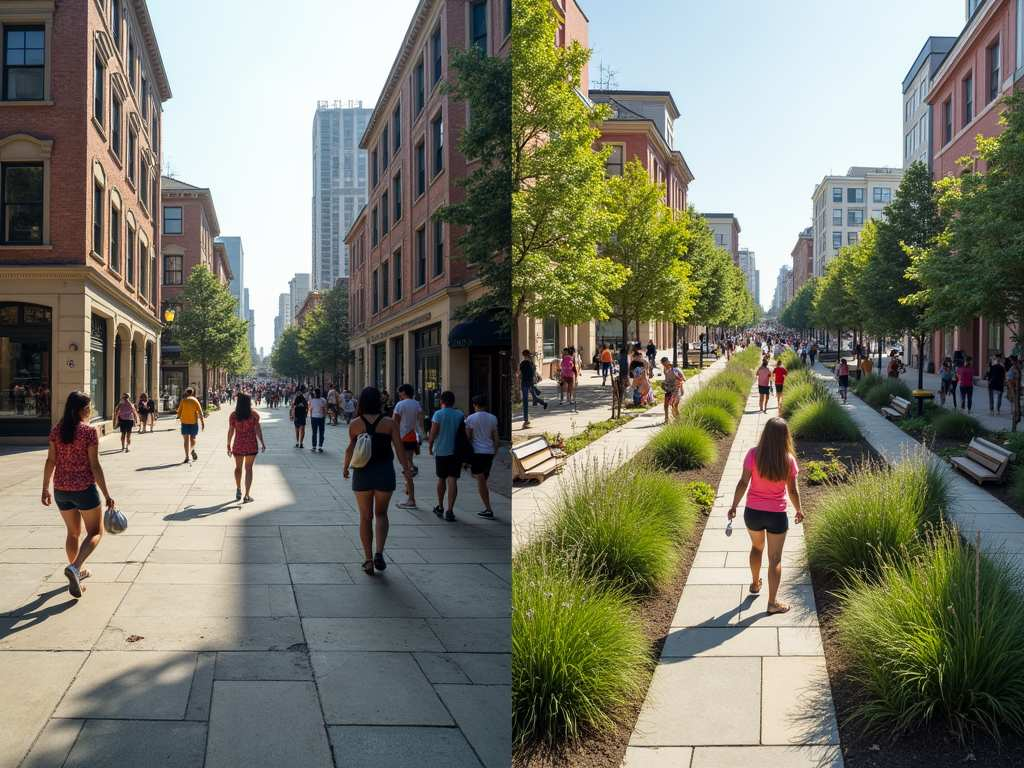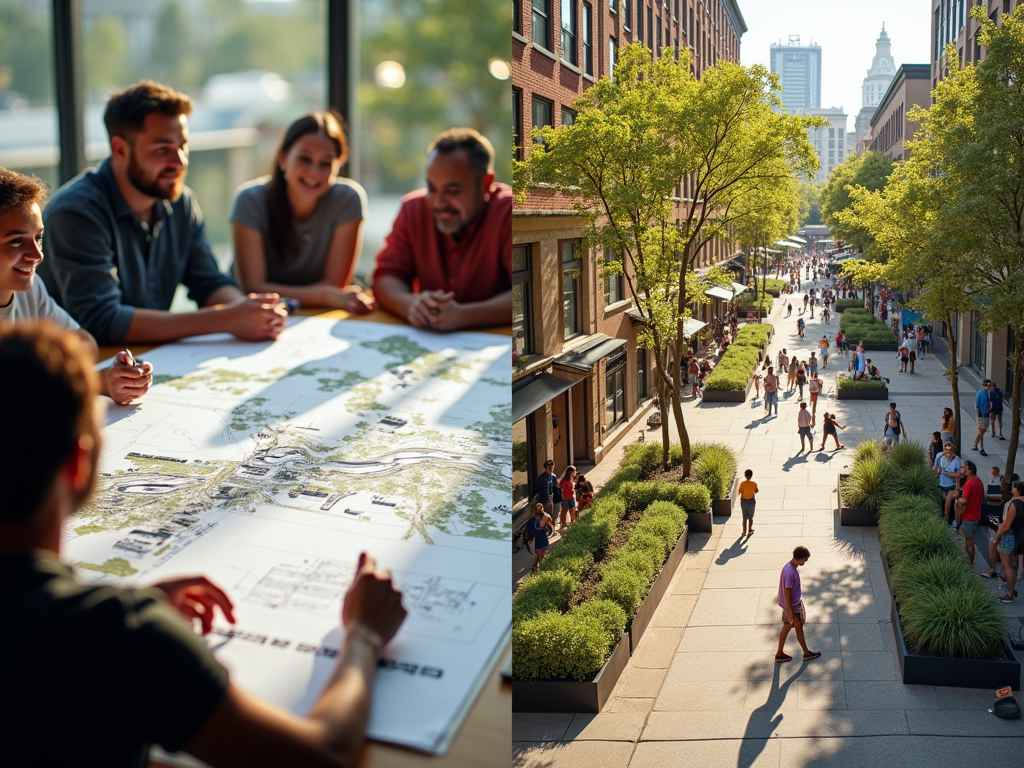As a facilitator of community-driven projects, I’ve witnessed how stakeholder collaboration can transform transitional spaces into vibrant, multifaceted hubs. At Curvspace, we value the collective input of owners, tenants, and visitors, recognizing that every perspective enriches the final design. In this article, we’ll explore methods for inclusive planning that honor diverse needs and aspirations. Discover practical engagement strategies, from surveys to workshops, that ensure your transitional spaces reflect the collective vision of your community.
Jump to:
The Power of Collaborative Design
Collaborative design is a dynamic approach that brings together diverse stakeholders to shape the creation of transitional spaces. By involving multiple voices in the design process, we can create environments that truly reflect the needs and desires of the community they serve. This approach not only leads to more functional and aesthetically pleasing spaces but also fosters a sense of ownership and pride among those who use them.
Understanding Stakeholder Engagement
Stakeholder engagement is the cornerstone of collaborative design. It involves identifying and involving all relevant parties who have an interest in or are affected by the project. This can include property owners, tenants, local residents, businesses, and government officials. Each stakeholder brings a unique perspective and set of needs to the table, enriching the design process and ensuring that the final product serves a wide range of users.
Benefits of Collaborative Design
- Diverse Perspectives: By involving multiple stakeholders, we gain insights that might otherwise be overlooked, leading to more comprehensive and inclusive designs.
- Increased Buy-in: When stakeholders are involved in the design process, they are more likely to support and embrace the final outcome.
- Enhanced Functionality: Collaborative design ensures that the space meets the practical needs of its users, as they have direct input into its creation.

4. Community Building: The process of working together on a shared project can strengthen community bonds and create a sense of collective ownership
Strategies for Effective Stakeholder Engagement
To harness the full potential of collaborative design, it’s essential to employ effective strategies for stakeholder engagement. Here are some key approaches:
1. Early and Continuous Involvement
Engage stakeholders from the very beginning of the project and maintain their involvement throughout the design process. This ensures that their input is considered at every stage, from initial concept to final implementation.
2. Clear Communication
Establish open lines of communication and provide regular updates to all stakeholders. Use a variety of channels, such as emails, newsletters, and social media, to keep everyone informed and engaged.
3. Interactive Workshops
Organize interactive workshops where stakeholders can actively participate in the design process. These sessions can include activities like brainstorming, sketching, and model-making to encourage creative input.
4. Surveys and Feedback Mechanisms
Implement surveys and feedback mechanisms to gather input from a wide range of stakeholders, including those who may not be able to attend in-person meetings.
5. Visualization Tools

Utilize visualization tools such as 3D models, virtual reality, and interactive charts to help stakeholders better understand and engage with design concepts.
Overcoming Challenges in Collaborative Design
While collaborative design offers numerous benefits, it also comes with its own set of challenges. Here are some common obstacles and strategies to overcome them:
1. Conflicting Interests
With multiple stakeholders involved, conflicting interests are bound to arise. To address this:
- Establish clear project goals and priorities from the outset
- Encourage open dialogue and active listening among all parties
- Use conflict resolution techniques when necessary
2. Time and Resource Constraints
Collaborative design can be time-consuming and resource-intensive. To manage this:
- Set realistic timelines and expectations
- Prioritize key decision points for stakeholder input
- Leverage technology to streamline communication and collaboration
3. Maintaining Momentum
Keeping stakeholders engaged throughout a long-term project can be challenging. To maintain momentum:
- Break the project into smaller, manageable phases
- Celebrate milestones and share progress regularly
- Rotate leadership roles among stakeholders to foster ownership
Case Study: Transforming a Transitional Space
To illustrate the power of collaborative design, let’s examine a hypothetical case study of transforming a transitional space in an urban neighborhood.
Project: Community Hub Redesign
A local government decided to redesign an underutilized public square to create a vibrant community hub. They employed a collaborative design approach, engaging various stakeholders including:
- Local residents
- Business owners
- Community organizations
- Urban planners
- Landscape architects
The Collaborative Process
- Initial Engagement: The project team conducted surveys and held town hall meetings to gather initial input from the community.
- Interactive Workshops: A series of design workshops were organized, where stakeholders worked alongside designers to create concept sketches and 3D models.
- Digital Collaboration: An online platform was set up for ongoing feedback and idea sharing, allowing for broader participation.
- Iterative Design: The design team presented multiple iterations of the plan, incorporating stakeholder feedback at each stage.
- Final Presentation: A community event was held to unveil the final design, celebrating the collaborative effort.
Outcome

The resulting design incorporated elements that addressed diverse community needs:
- A flexible event space for local markets and performances
- Green areas for relaxation and environmental benefits
- Improved accessibility features suggested by disability advocates
- Public art installations curated by local artists
- A children’s play area designed with input from families
The collaborative approach led to a design that not only met functional requirements but also reflected the community’s identity and aspirations. The project garnered widespread support and a sense of ownership among residents, ensuring its long-term success and sustainability.
Conclusion
Collaborative design is a powerful tool for creating transitional spaces that truly serve their communities. By engaging multiple stakeholders throughout the design process, we can create environments that are not only functional and beautiful but also deeply meaningful to those who use them. At Curvspace, we’re committed to fostering this inclusive approach, ensuring that every voice is heard and every perspective considered in shaping the spaces we create.
As you embark on your next design project, consider the transformative potential of collaborative design. Embrace the diversity of voices in your community, and watch as shared visions become vibrant realities. Together, we can create transitional spaces that inspire, connect, and endure.
People Also Ask:
Q1: How does collaborative design differ from traditional design approaches?
A: Collaborative design involves multiple stakeholders throughout the process, whereas traditional approaches often rely on a single designer or team. This inclusive method leads to more diverse perspectives and greater community buy-in.
Q2: What tools can facilitate remote collaboration in design projects?
A: Digital platforms like Miro, Figma, and virtual reality tools can enable remote stakeholders to participate in the design process, share ideas, and provide feedback in real-time.
Q3: How can we ensure all voices are heard in a collaborative design process?
A: Implementing a variety of engagement methods, such as surveys, workshops, and online platforms, can help capture input from diverse stakeholders. It’s also important to actively seek out and include underrepresented groups in the process.
References
- Stakeholder Engagement: A Road Map to Meaningful Engagement
- Collaborative Design Management
- Eight Key Strategies for Successful Stakeholder Involvement in Design
- Stakeholder Engagement Visualization (EnVision) System for SysML Diagrams
Disclosure
Our content is reader-supported. This means if you click on some of our links, then we may earn a commission. Commissions do not affect our editor’s opinions or evaluations. Learn more about our editorial process.

About the Editorial Staff
The Curvspace editorial team comprises a diverse group of experts on intermediate and threshold spaces in homes and workplaces. Architects and interior designers, civil engineers and artists, environmental and behavioral psychologists, sociologists and anthropologists. All collaborate to create helpful content, that explores the full potential of these often-overlooked areas to enhance our daily lives.


